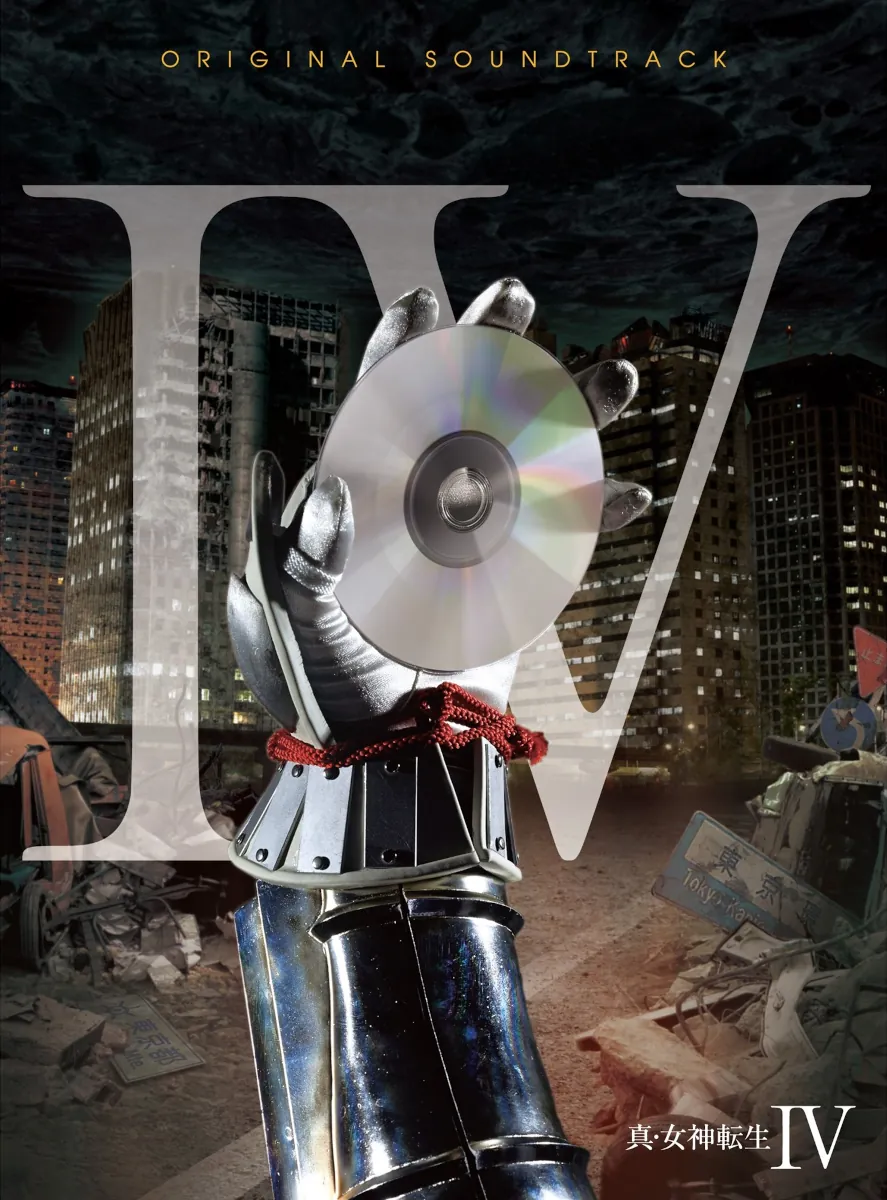To say that Atlus’ Shin Megami Tensei series deals in juxtapositions would be an oversimplification. The series’ ongoing motif of Tokyoite students battling and commandeering demons and creatures from various mythologies to halt universe-shattering wars between pseudo-biblical angels and devils is still present, but Shin Megami Tensei IV (released on the 3DS in 2013) further complicates the ordeal by encasing its alternate universe, fiend-infested modern Tokyo in a giant barrier on which rests the medieval-styled kingdom of Mikado. How does one—or in this case, six—composers encapsulate the versatility and eccentricity of such a setting on an itty-bitty 3DS cartridge?
Very well, actually!
Shin Megami Tensei IV and its 113 tracks (four and a half hours of music!) were primarily composed and arranged by Ryota Kozuka, a longtime contributor to the “Megaten” series and its various offshoots. This feels simultaneously like Kozuka’s big break and his proving ground, an evident success considering he went on to lead music design on Shin Megami Tensei V as well. For all its tonal and instrumental agnosticism (seriously, Kozuka could beat rhythm out of a kitchen sink if you’d let him), SMTIV’s soundtrack is surprisingly cohesive and easy to get absorbed into.
The battle themes take a hard rock approach, mixing dissonant melodic synths otherwise reserved for atmospheric tracks and relentlessly kicking them along with guitars so crunchy they’re fit to shatter. Early boss track “Battle-b2” is a heart-racing standout and deserves to be played loud. Seriously, this track is awesome. In contrast, the slow, dreadful buildup of “Battle-c4” is unique among the otherwise uptempo battle themes and plays through with operatic swells and industrial undertones. Then there’s “Battle-c3,” which wouldn’t be out of place as a 3D Sonic boss theme, and the appropriately foreboding and powerful “Battle-c6” used in the game’s final battle. As the game’s soundtrack progresses, it becomes more sonically unhinged and ambitious, albeit by sacrificing some listenability when divorced from the game’s context.
For exploration/area themes, you have a mix of heavy industrial and techno in Tokyo-adjacent areas and more fantastical, otherworldly sounds used for areas surrounding the domed city. While many themes are rather simple on their own (the eerie yet peaceful “Barracks” or the tense “Negotiations” come to mind), it’s glorious when modernity and mysticism collide, such as in the crisp dungeon theme “Tsukiji Hongwanji” or the vocal samples accenting the techno-infused “Hunter Association.” At worst, some tracks are a little too simple to the point of droning on (hear “Conversation,” for example), but even then, it’s plain to see the precariously balanced atmosphere Kozuka and co. are going for. In general, Disc Two, featuring the many wards of Tokyo, has a lot of 80s synth and funk and makes for an especially fun listen.
If you’re looking to throw this soundtrack on while doing something else, I guarantee you’ll be checking your music player repeatedly—Shin Megami Tensei IV’s music is nothing if not attention-arresting. It lulls you in with its catchy area themes, creeps you out with tension-building tracks, and then melts your face with its battle themes, mixing them all in some miraculously coherent whole. If you’re not looking to have your emotions manhandled, its individual tracks are a great way to bolster any collective playlists you’re building up.
The Shin Megami Tensei series has been doing great, weird music for decades now, and Shin Megami Tensei IV pushes the 3DS sound capabilities to its limits, making impressive leaps in atmosphere-building, musical storytelling, and straight-up rockin’. You can listen to this one on multiple streaming services, or import the physical album for your own collection.





